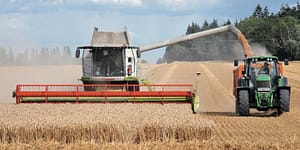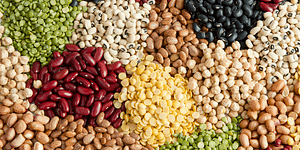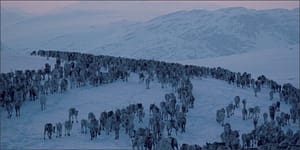Give a Dam and Worth a Dam

If you’ve been following our blog recently, you’ve probably read about the myriad abilities beavers have. With the ingenuity to help with things like water conservation, flood damage, and wildfires beavers are one of the few species capable of cleaning up after the ecological destruction caused by humans. If you’re not a Beaver Believer yet, keep reading to learn why beavers are an integral part of creating a healthy ecosystem.
The following interview with Ben Goldfarb, author of Eager, first appeared in Pacific Standard. It has been adapted for the web.
How did we overlook the role of beavers in shaping the North American landscape for so long?
Our conception of what North America should look like was permanently distorted by the history of the fur trade. When trappers showed up they found this continent that had been so heavily modified by beavers. You read these old explorers’ accounts, and it’s incredible how wet North America was. There were ponds and wetlands and beaver dams everywhere. When the beavers were eliminated, a lot of that beaver-built infrastructure was destroyed. I think that one of the reasons we don’t fully appreciate the impact that beavers have had on this continent is that we trapped them out so early in the course of European settlement.
Trappers started showing up in North America in the early 1600s and basically devastated the continent’s beaver population, and it’s not for another couple hundred years that ecologists and naturalists show up to document what the continent’s ecosystems looked like. So we have this very degraded sense of how North America should look and function from an ecological and a hydrological standpoint. It’s sort of like the whole shifting baselines syndrome concept, where the degraded past gets normalized as present.
In Eager, you call beavers our closest “ecological and technological kin.” What do you mean by that?
We humans tend to regard ourselves as kind of unique in the ways that we modify our own surroundings to maximize our own food and shelter. But beavers do that too. They build dams, they create ponds and wetlands that they use to protect themselves from predators, to irrigate their own food supply. They almost act as rotational farmers; they’ll raise the water table to increase the growth of willow and other water-loving plants. That’s one of the things that always drew me to them: They just remind me of people in a very real way.
 You make the point that beavers are not endangered, they don’t need us, but that we need them. What can beavers do for us?
You make the point that beavers are not endangered, they don’t need us, but that we need them. What can beavers do for us?
One great example is water quality. There’s a huge problem in this country with agricultural pollution with nitrogen and phosphorus from chemical fertilizers ending up in rivers and estuaries and oceans and leading to dead zones. It’s critical that we keep that pollution from reaching the ocean, and beaver ponds are incredibly effective at settling out those pollutants.
But the biggest example is climate change: As the climate warms, more precipitation is falling as rain rather than snow. Instead of remaining in snowpack and gradually melting throughout the course of the spring and summer and fall and keeping rivers and streams wet well into the dry season, now all that precipitation is falling as rain. Any entity that can store water on the landscape, that can keep water high in some of these mountain headwaters in places like the Cascades or the Sierra, becomes incredibly valuable. What stores water better than a beaver? Basically nothing.
Why makes a beaver dam a better option than a man-made one?
Giant reservoirs like Lake Powell or Lake Mead, they’re effective when it comes to just storing water, but of course they have all kinds of negative ecological consequences. We know that mega-dams disrupt fish migrations, that they release methane—they have these distorting impacts on the landscape. Whereas beaver ponds and wetlands provide amazing habitat for waterfowl, for fish, for amphibians, for all of these things that are harmed by human dams. So to me, beaver dams provide a lot of the same water storage benefits as concrete dams, but they do so in a way that helps sustain life rather than harming it.
So what’s the downside?
I certainly heard a lot of skepticism about whether more beavers on the landscape is really a good thing. Beavers can be destructive and hard to co-exist with. They chew down valuable trees, they flood people’s property, they clog up road culverts, they certainly do millions of dollars in damage every year. There are far more beaver haters out there than there are beaver believers like me. So one question I heard a lot was, “Can we really co-exist with expanded beaver populations?” A lot of what I try to do with this book is say, “Yes, of course we can.” There are all kinds of non-lethal techniques that we can use to allow beavers to persist on our landscapes and in our waters while mitigating some of the damage that they do.
What do you hope readers will take away from Eager?
First and foremost I just want people to appreciate the incredible role that these animals played in the development of our landscapes and our history as a people and a culture. I think that lots of the ecological and hydrological problems that we’re confronted with now can be, to some extent, addressed with more beavers. I don’t want to portray beavers as some kind of silver bullet because, for example, climate change is obviously a problem that’s so vastly beyond the scale of beavers to address that sometimes I feel a little bit silly suggesting it. But they can absolutely put a dent in some of these issues, like water storage. So they’re not a panacea but they are certainly a help to us, and they’re an incredibly cost-effective help. If you think about how much money we spend, for example, retrofitting irrigation infrastructure or installing new gray-water systems or no-flush toilets, this water-saving stuff can be pretty cost-ineffective sometimes. Getting more beavers on the landscape is something we can basically do for free.
 I imagine you had some fun picking out the title for this book. Can you share some of the other titles you considered?
I imagine you had some fun picking out the title for this book. Can you share some of the other titles you considered?
Obviously beavers lend themselves to puns. There’s a million different dam puns: Give a Dam and Worth a Dam. There was Leave It to Beavers. I think at one point one of the editors calculated that there were something like 180 different permutations of title and subtitle. We went through every conceivable beaver pun before settling on Eager, which to me is a great title. I was happy with our choice.
Recent Articles
This long-lived perennial legume is used for forage and erosion control. Kudzu is edible with many medicinal uses and other applications. Pollinators of all kinds love its prodigious lavender blooms!
Read MoreMove aside, maple! We have two new syrups to add to the table. Read on for insights on tapping, selling, and eating syrup from walnut & birch trees.
Read MoreWhy is modern wheat making us sick? That’s the question posed by author Eli Rogosa in Restoring Heritage Grains. Wheat is the most widely grown crop on our planet, yet industrial breeders have transformed this ancient staff of life into a commodity of yield and profit—witness the increase in gluten intolerance and ‘wheat belly’. Modern…
Read MoreDid you ever wonder how leeks, kale, asparagus, beans, squash, and corn have ended up on our plates? Well, so did Adam Alexander, otherwise known as The Seed Detective. The following is an excerpt from the The Seed Detective by Adam Alexander. It has been adapted for the web. My Seed-Detective Mission Crammed into two…
Read MoreMost people know that the big man in the North Pole has a team of reindeer waiting to deliver presents, but not as many know who is taking care of these animals behind the scenes: the Sámi people of Norway. This is an excerpt from The Reindeer Chronicles by Judith D. Schwartz. It has been…
Read More
 You make the point that beavers are not endangered, they don’t need us, but that we need them. What can beavers do for us?
You make the point that beavers are not endangered, they don’t need us, but that we need them. What can beavers do for us? I imagine you had some fun picking out the title for this book. Can you share some of the other titles you considered?
I imagine you had some fun picking out the title for this book. Can you share some of the other titles you considered?







